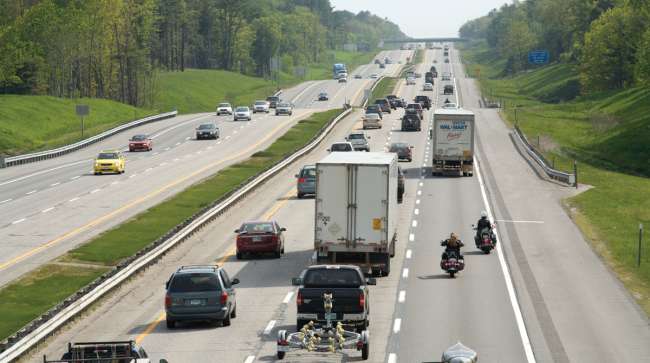Staff Reporter
FHWA Awards $96M to 16 States for High-Tech Safety Projects

[Stay on top of transportation news: Get TTNews in your inbox.]
The Federal Highway Administration has awarded $96 million in cutting-edge technology grants to 16 states in projects that enhance transportation safety, traveling efficiency, intermodal connection, pedestrian mobility and system performance.
“With this latest round of funding, we’re helping states across the country develop the innovative, multimodal solutions that will make travel on our highways and transit systems easier, safer and more convenient,” U.S. Transportation Secretary Pete Buttigieg said.
He predicted the projects will modernize transportation by making travel more accessible, safer and efficient.
California will receive the largest award ($18 million) of the Advanced Transportation Technologies and Innovation grants, and that money will be split among three projects. The city of Pomona will receive $10.6 million to use unidentified transportation technologies along 5.3 miles of roads. The California Department of Transportation will receive $5.6 million to increase its connected vehicle infrastructure. The County of Sacramento was allocated $1.9 million to develop a software application that guides pedestrians when walking and crossing intersections.
The North Carolina Department of Transportation will receive the next largest grant ($11.9 million) to interconnect 1,000 isolated and closed-loop traffic signal systems. This project will deploy more sophisticated transportation management technologies, especially in the state’s rural communities.
For truckers, Maine was awarded $5.2 million to offset a $6.5 million project to develop real-time hazard alerts about congestion, bad weather and height restrictions on low bridges through connected vehicle technologies.
“MaineDOT intends to provide active, audio messaging within the transportation corridor in real time. The project will leverage standardized C-V2X technology to send warning messages in areas with bridge height restrictions, congestion, and where hazardous weather may impact travel,” FHWA stated.
McLeod Software CEO Tom McLeod explores the potential for artificial intelligence to boost efficiency and build resilience. Tune in above or by going to RoadSigns.ttnews.com.
The project plan noted that the new technology’s most important feature will be installing C-V2X roadside units and field monitoring units to broadcast bridge height restrictions to trucking and freight industry partners and the public. Alerts will be created for 18 low-clearance bridges in rural areas (Augusta, Brunswick, Sidney, Waterville and West Bath) and in the cities of Bangor, Cumberland, Falmouth, Freeport and South Portland.
“Audible notifications will be sent to the cabs of drivers’ vehicles or to their mobile devices, alerting them of the potential obstacle. The messaging is intended to occur multiple times, providing repeated notices in advance of the posted overpasses to allow vehicles to divert prior to reaching the restricted bridge. The Maine Motor Transport Association is very interested in partnering with MaineDOT on this important project, which will help create a smarter, more efficient transportation network throughout the state,” MaineDOT noted.
The technology will also send other notifications about traffic congestion and weather warnings in Brunswick. Audible messages will provide alerts to drivers, especially for those traveling on U.S. Route 1.
New weather warnings will target Aroostook County to reduce winter crashes along U.S. Route 1 and state Route 11. The high-tech notification system will alert drivers about unique weather hazards. “Several segments along U.S. Route 1 and Route 11 in Aroostook County are flat, with farmland on either side resulting in blowing snow, black ice and white-out conditions,” MaineDOT stated.
C-V2X technology also will be installed to warn drivers traveling along Interstate 95 around Palmyra and Carmel, Maine, about black ice, blowing snow and sun glare.
“These projects are a critical opportunity to invest in our future by leveraging technology and innovation,” Acting Federal Highway Administrator Kristin White said. “These investments offer new and transformative transportation options, including communities who have lacked efficient and affordable means of transportation.”
Want more news? Listen to today's daily briefing below or go here for more info:





